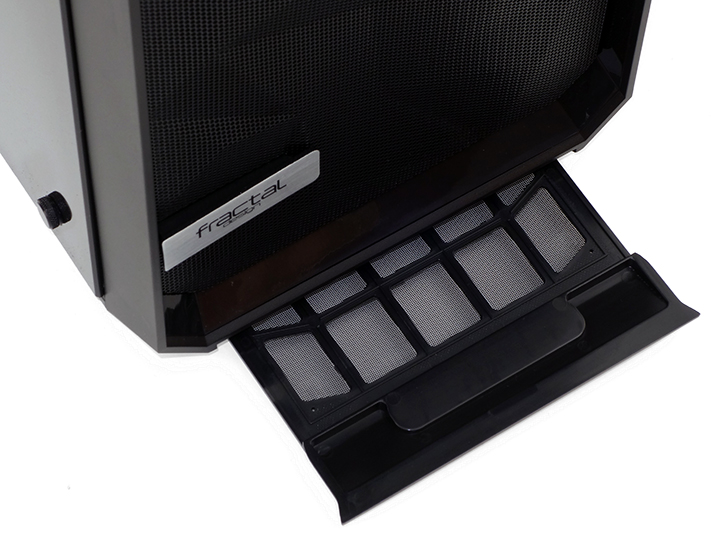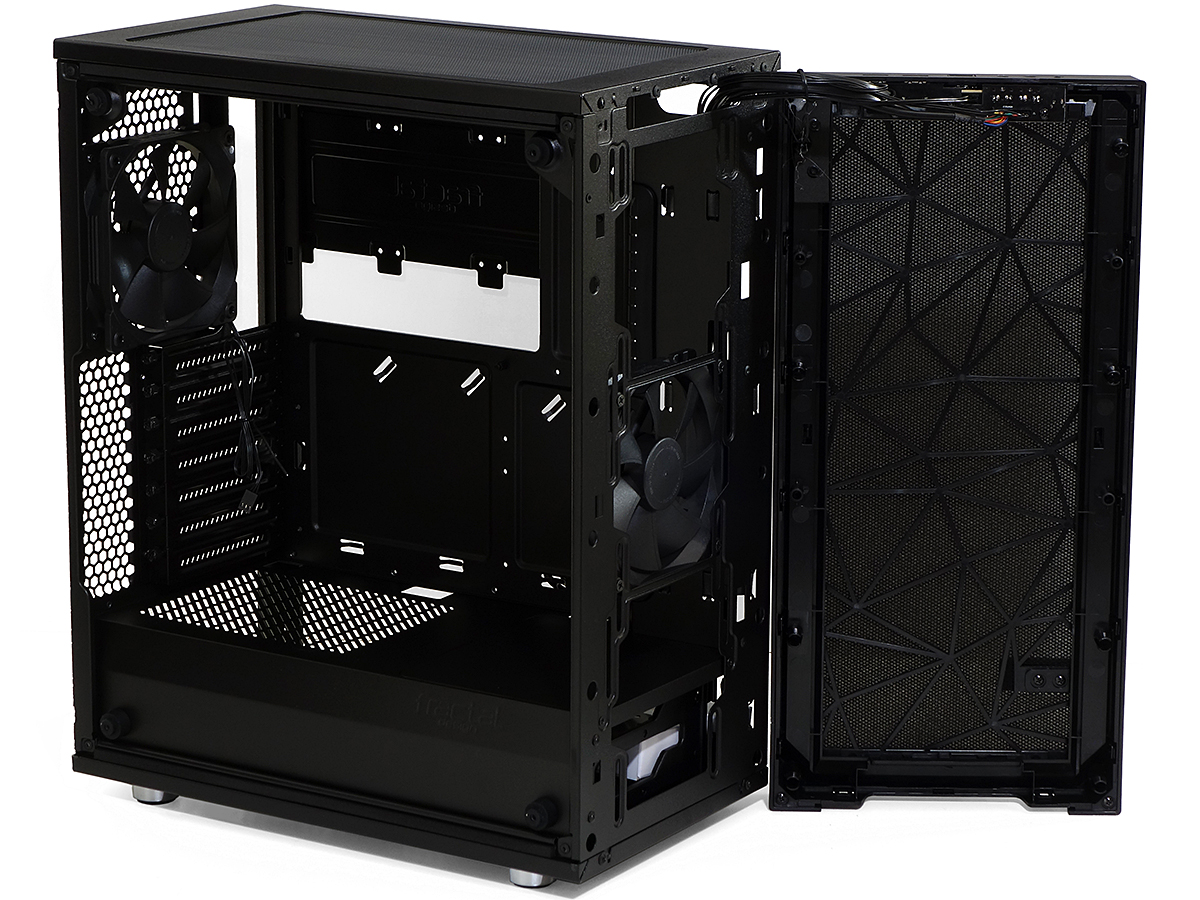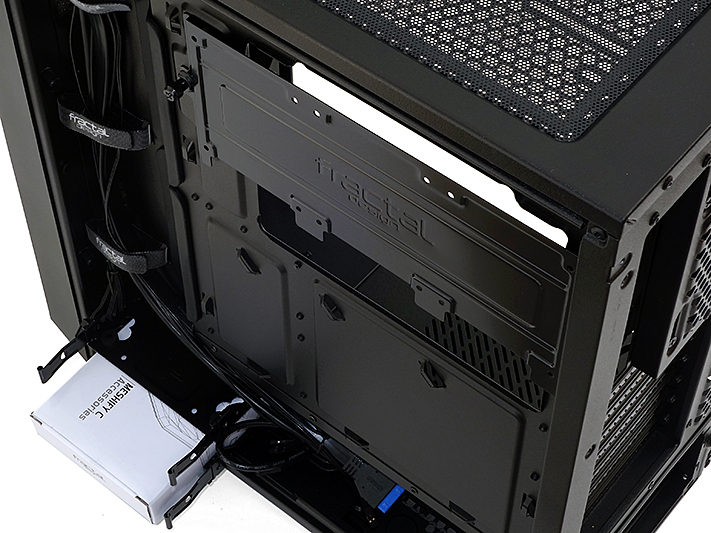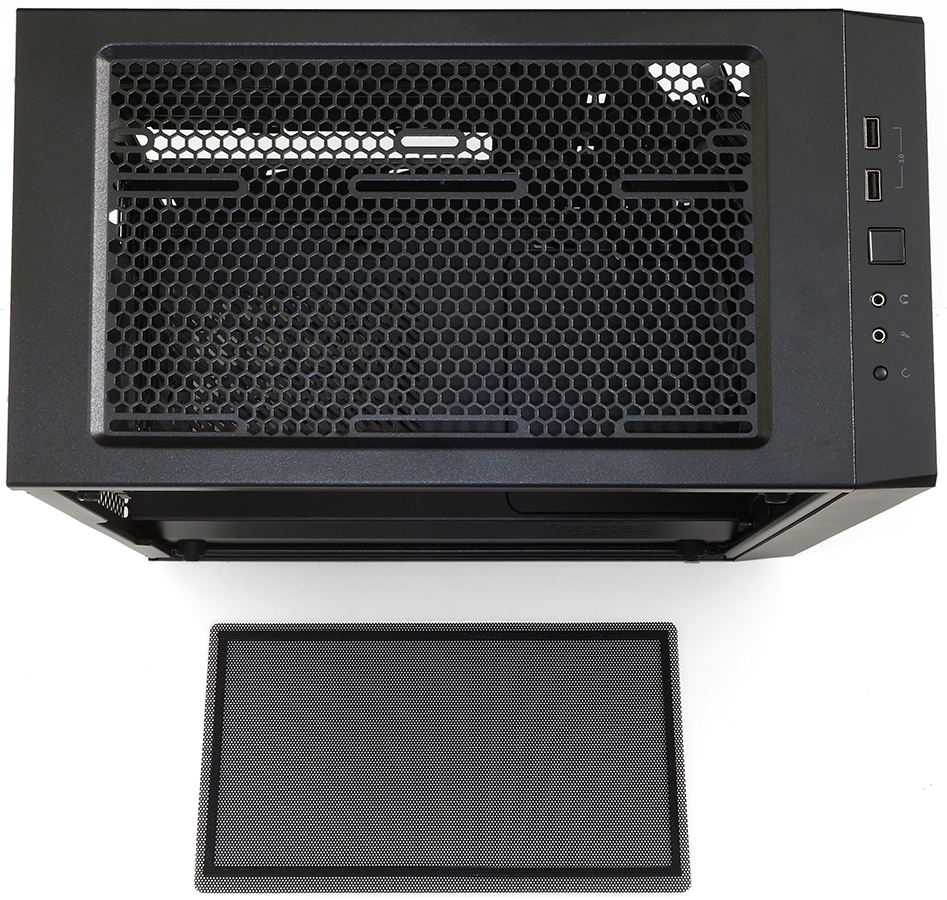Fractal Design Meshify C Case Review
Why you can trust Tom's Hardware
Features & Specifications
Fractal Design built its reputation with high-quality, mid-priced cases, shocking the industry when it later introduced lightweight models at reduced prices. Key Fractal Design features such as asphalt sound damping and anodized aluminum front-panel inlays were sacrificed in order to reach more price-sensitive buyers, yet even those cases retained the firm’s classic solid-face design. Fractal Design knew it wouldn’t raise many eyebrows by adding a glass panel to a sub-$100 case, so the company decided to Meshify its latest creation.
Specifications
What could this mean for performance? The solid front panel used in previous designs reflected some internal component noise back into the case, so your new build might be a little noisier. Yet we’re no longer forcing the intake fans to draw air through thin slots on the sides of the front panel, so your new build might also be a little cooler. Since automatic fan controllers often turn down the fans on systems that keep temperatures in check, a perfectly identical cooling-to-noise ratio would be ideal.
The front panel isn’t smooth but instead angled in multiple directions. Fractal Design claims this increases airflow, but a more likely benefit is that it won’t show ripples the way flat panels often do.
Front panel connections at the top include just two USB 3.0 headers, headphone and microphone jacks, along with power and reset buttons. The mesh top panel cover behind it is affixed via magnetic strips.
A full-length bottom dust filter slides in from the front to cover both an optional intake fan and the power supply air inlet.
The Meshify C rear panel has a removable power supply flange, a slide-able exhaust fan mount, and seven expansion slots with screw-on covers. The exhaust fan’s screw slots allow builders to make room for the end caps of single-fan radiators, and the power supply flange allows builders to insert the power supply from the back of the case. The 8.9” (including cables) power supply mounting depth is limited only by a removable 3.5” drive cage.
The Meshify C face panel snaps off to reveal a removable center panel with encapsulated foam dust filter, and front panel mounting for 3x 120mm or 2x 140mm radiators and fans. A single 120mm fan is included.
Get Tom's Hardware's best news and in-depth reviews, straight to your inbox.
A 5.4”-deep removable panel provides room to convert the Meshify C to support a large radiator. That panel is large enough to extract the lower 3.5” drive cage from the top, which is required when mounting either a 3x 120mm radiator or a bottom-panel intake fan.
Screwed to the bottom panel above the slide-out dust filter, the lower hard drive cage includes two 3.5” trays with 2.5” secondary mounting holes. Above it, a thumb screw secures a three-by-2.5” drive tray to the motherboard tray. Drives in the 3.5” format get the benefit of vibration-damping grommets, for which shoulder screws are included in the installation kit.
Another dual-fan radiator can be placed on the top panel. Since there’s only a bit over an inch of space above the motherboard, Fractal Design offset screw slots to allow a radiator and fans to hang below the top of the motherboard. The offset provides around 1” of motherboard clearance for 140mm fans and 1.8” of clearance for 120mm fans.
MORE: Best Cases
MORE: All Case Content
-
poochiepiano Good article, Thomas. Now that the Define C TG has been released, it seems like if you want glass, you can choose between the Meshify and the Define for either cooling or silence. Would love to hear if there are any plans to review the Define C TG and make those comparisons as well?Reply -
therogerwilco Holy crap. 'Asphalt based'... Maybe this is why I've had lung problems within the last few years after getting 2 of their XL cases? lol.. This freakin world... I mean really, 2 new pieces of large asphalt with 200 CFM of air movement through the case.Reply -
Crashman Reply
They did put cloth over it so it wouldn't be sticky or get gouged as easily... :)20042301 said:Holy crap. 'Asphalt based'... Maybe this is why I've had lung problems within the last few years after getting 2 of their XL cases? lol.. This freakin world... I mean really, 2 new pieces of large asphalt with 200 CFM of air movement through the case.
-
daglesj I just love the USB sockets on Fractal cases. They are neat and complete metal surrounds. Not those cheap looking split petal ones. Hate those.Reply -
zippyzion When I first saw the front of this my mind immediately went to acoustic rooms with their odd angled walls. I thought that maybe they FINALLY incorporated some sonic wizardry to help quiet down mesh front cases. It seems I was wrong and I'm actually quite disappointed. I can see how it would help airflow though. More surface area means more open space and the angled mesh provides more surface area... but man, I was hoping for that sonic wizardry.Reply -
envy14tpe Finally, 2years late to the party, Fractal adds glass. Jokes aside, can anyone tell me which case has a similar front design? I know I've seen something similar before.Reply -
therogerwilco They state it in the article. I also found a comment by fractal in another site, they refer to it as bitumen based.Reply -
Crashman Reply
https://en.wikipedia.org/wiki/AsphaltWe could call that "using tech lingo to obscure the basics."20045069 said:They state it in the article. I also found a comment by fractal in another site, they refer to it as bitumen based.
-
therogerwilco I took the sides of the cases off last night, smelled closely, still very fresh after a couple years. Coincidentally, my headache got worse last night after smelling them. I think it's mostly odorless hydrocarbons though. All in all, 2 XL cases and the mini ITX case, and it's several square feet of asphalt that's been spewing gasses into the room until equilibrium is reached. Easily done given that I have about 200 CFM in each big case and 100CFM or so through the other. 500CFM of air passed sheets of asphalt into my living quarters. WTH WERE YOU THINKING FRACTAL. Now I have to rip those things out of my cases. I thought it was awesome when I got them, but if someone would have told me what it was, I would have never bought them. Now I have COPD symptoms. Thanks. Jerks.Reply








